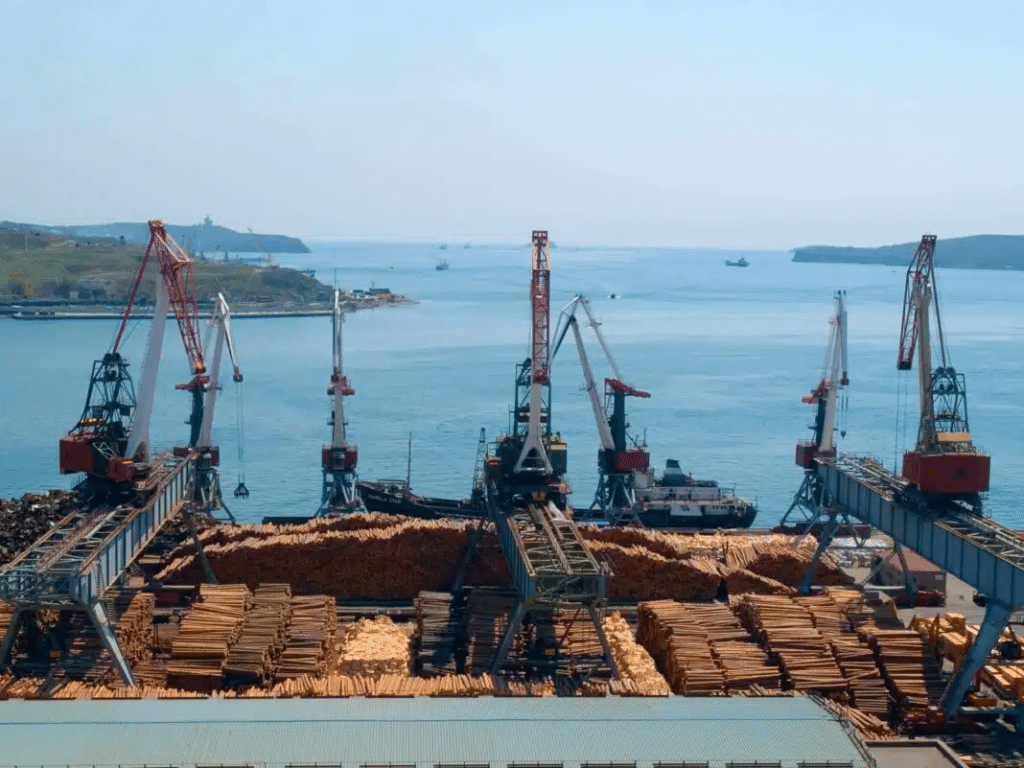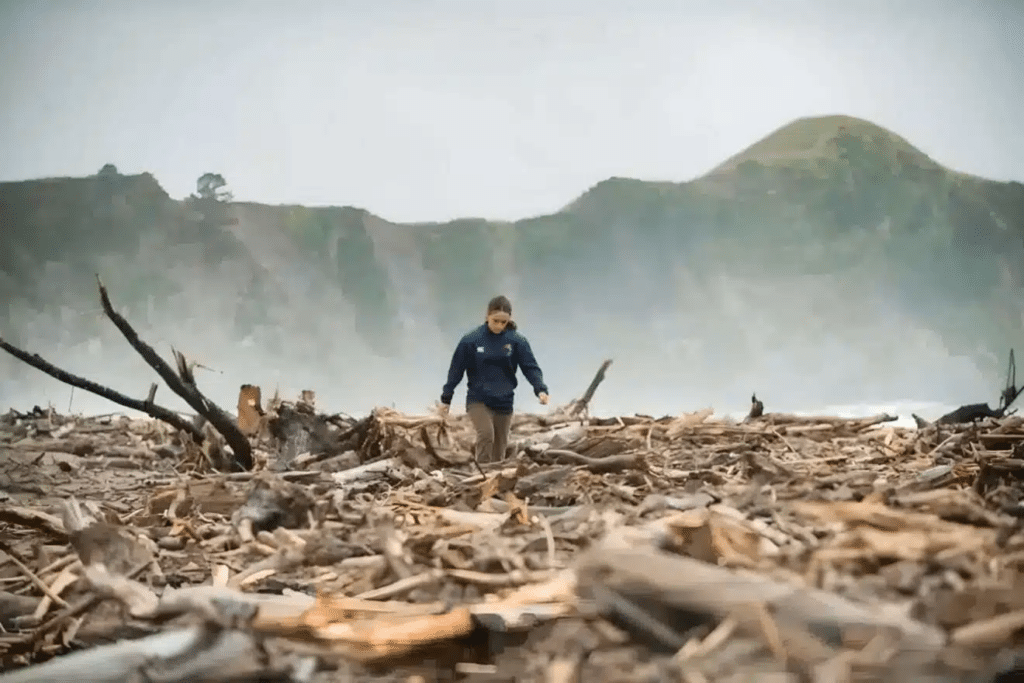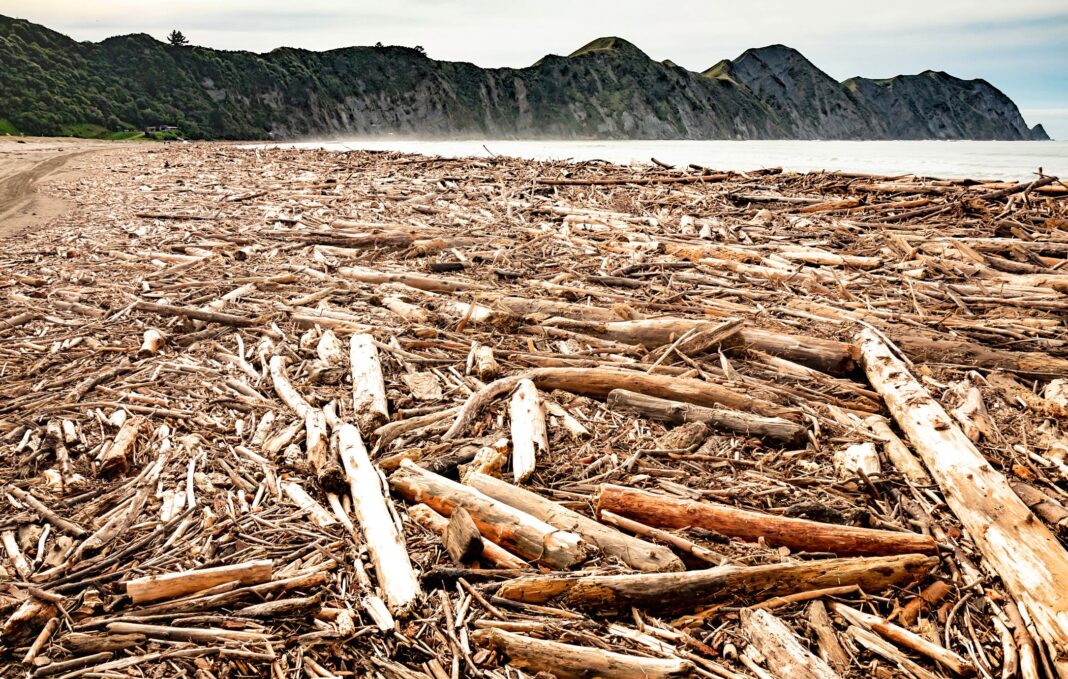FSC has suspended Ernslaw One’s certification after a forest slash caused by storms in 2018 caused a surge of woody debris to flow down rivers and onto the beach, damaging homes, farms, roads, bridges and beaches in Tolaga Bay.
It comes as Wood Central reported that Ernslaw One (New Zealand’s fourth largest forest manager) and the country’s largest independent forest manager (PF Olsen) were under scrutiny after an FSC-certification body launched an investigation into both companies in the wake of Cyclone Gabrielle.
FSC is one of two globally recognised forest certification systems, with certification used to sell logs on the global market, including China, the destination for 60% of New Zealand’s multi-billion dollar log market.

With over 95,000 hectares of forest area under management, Ernslaw One has extensive forest interests in Gisborne, Southern North Island and Otago-Southland.
Part of the Oregon Group, owned by the Malaysian-based Tiong family, it has a subsidiary company and processing arm, Winstone Pulp International, which undertakes lumber and pulp manufacturing.
In December 2022, a court ordered the conglomerate to pay NZ $225,000 for “serious forestry offending related to a storm event in Uawa/Tolaga Bay in June 2018.”
The company has since confirmed that it is now appealing the FSC suspension, with a spokesperson for Ernslaw saying that it was “not privy” to findings “because the audit was carried out by a third-party body (SGS) and not Ernslaw itself.”
In October, RNZ reported that FSC had ordered a Canadian expert to check out the New Zealand arm of international company SGS, which audits forestry on its behalf in New Zealand.
SGS also audited forestry service provider PF Olsen, another company fined over damage from forestry debris. In an email exchange, Ernslaw said it was engaging with SGS to resolve the suspension.
“Remediation of the matters underpinning the suspension is well underway,” it said.
In total, up to 400,000m3 of slash-washed down hills, clogged rivers, and damaged properties – with 47,000m3 of the woody debris washed up on Uawa Beach after the 2018 floods.

Last week, Wood Central reported that 12 months after Cyclone Gabrielle – one of the most costly cyclones ever – NZ foresters are now using big data to reduce the risk of slash-induced damage.
Described as “an environmental crisis in the making,” slash-induced damage led to the former Hipkins government introducing new forestry slash and exotic plantation rules, enforceable from October last year.
Rotorua-based Interpine Innovation has taken a 50-year method for measuring slash, known as the “Wagner Waste model”, and turned it into a highly accurate, digitised model to measure post-harvest levels.
According to Interpine CEO Te Kapunga Dewes, who secured the NZ Forester of the Year Award last year, the new technology will, for the first time, allow foresters to assess feeling completeness and reconcile yield estimates.
He said the “Wagner Waste method” has been used for almost half a century to estimate volumes of remaining forest waste by sampling along transect lines.
Using drone-based LIDAR remote sensing with photogrammetry tech linked to deep learning software enables Interpine’s solution to measure forest waste across the logged site rather than rely on a variable sample estimate.
“The tech can compare the compliance requirement against what is on-site, right down to specific pieces of timber, identifying those that may exceed the regulations. You can walk over and touch the timber the technology identifies.”

According to Mr Dewes, the technology goes further: “incorporating slope, soil and watercourse inputs enables it to render a risk profile for the site, highlighting specific areas within its footprint that may require more attention.”
Mr Dewes says the technology is a progressive move by his company, recognising the industry has needed to improve how it cleans up sites and be more accountable.
“And we are proud that this is home-grown technology based on a stand-level approach to the site, not a sampled approach. It’s using locally developed tools for local problems,” Mr Dewes said before adding, “Operators can go out, hand on heart, and say they are 100% meeting their compliance requirements and can step up further from there.”







